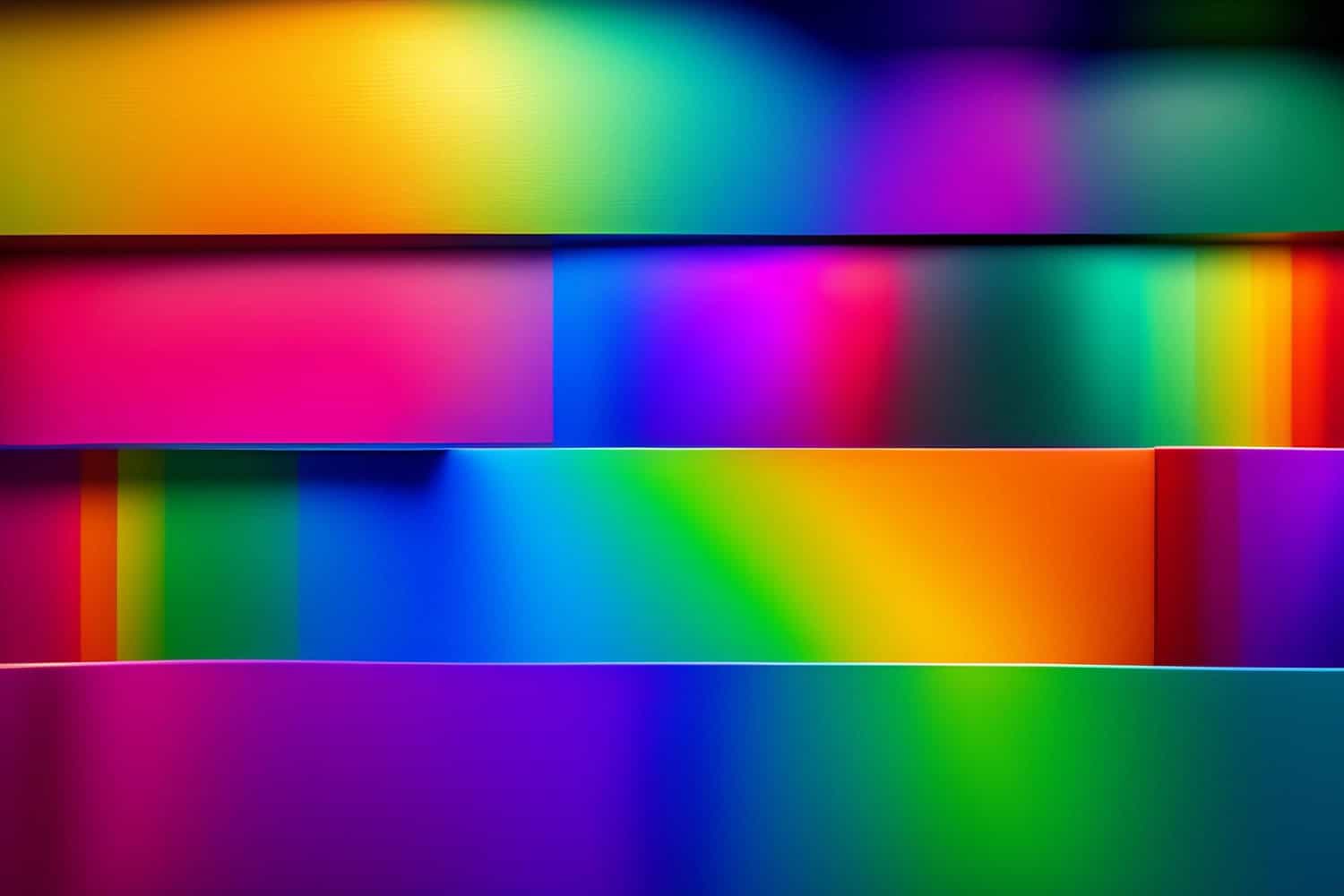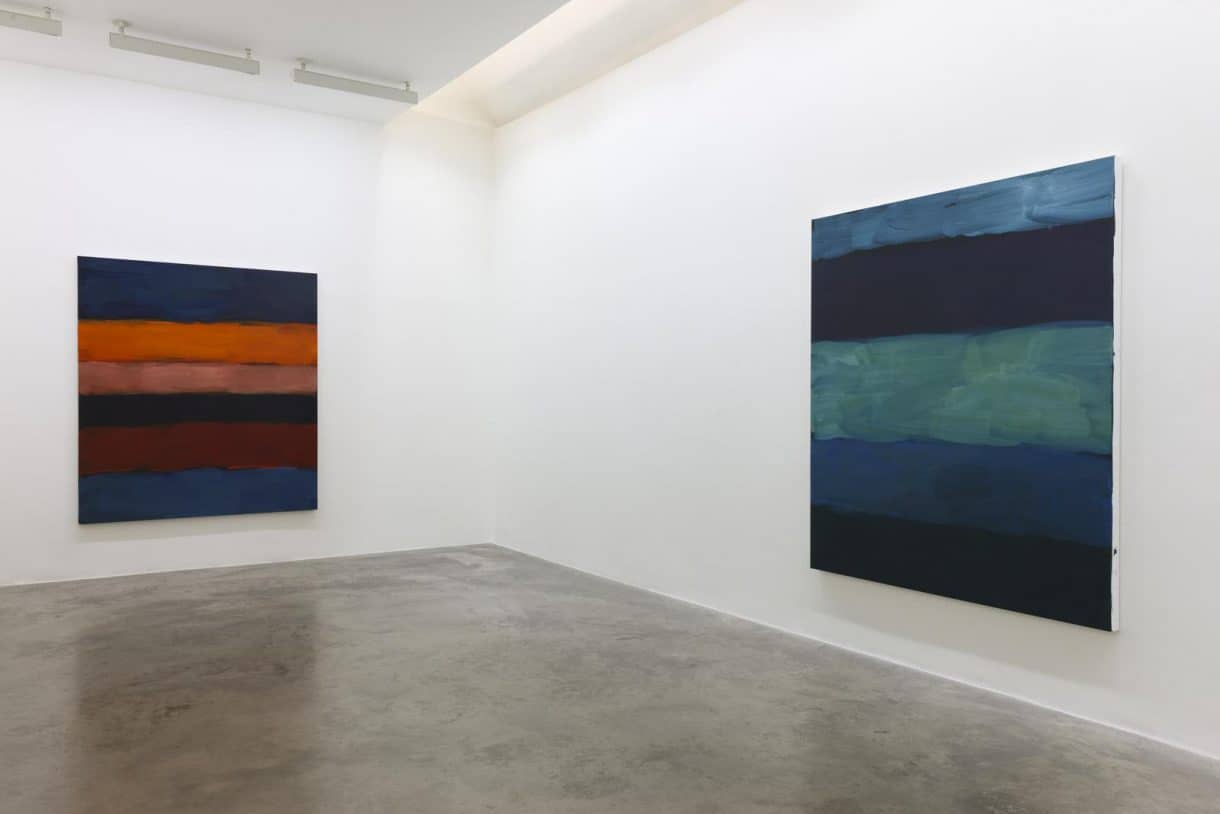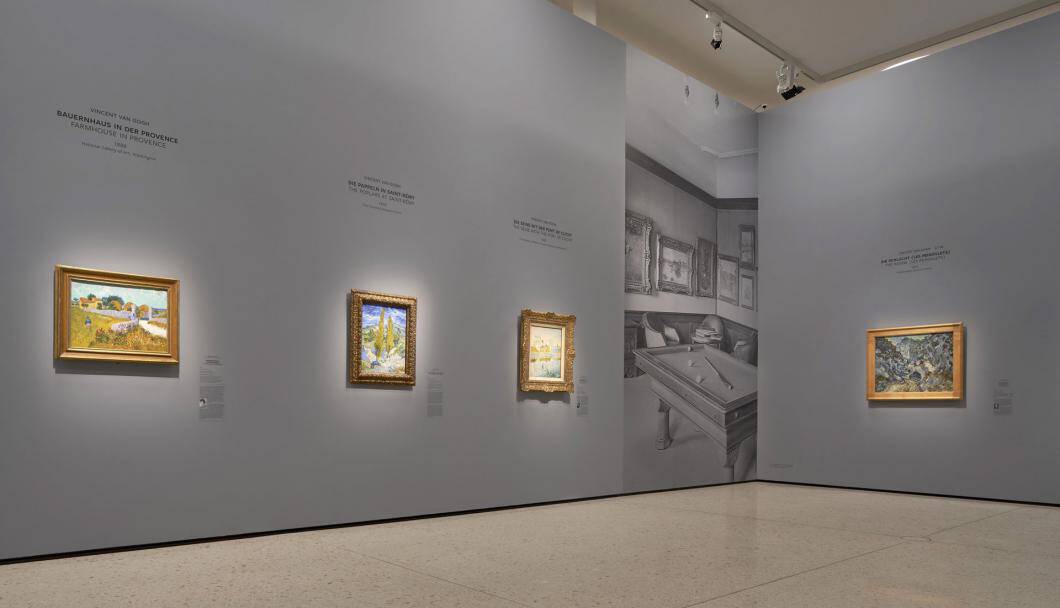Designing great visuals involves a lot more than what meets the eye. It’s imperative to recognize the crucial role that color plays in daily online and home designs. After all, they have a profound impact on our lives, even if we are not immediately aware. But how do designers determine which ones to use?
The entire process must commence with comprehending color theory and how colors are linked. As such, what exactly are harmonious hues, and how do they function?
In this article, we’ll explore the fascinating world of analogous colors and their significance in design. We’ll dive into the mechanics of similar shade schemes, their impact on our emotions and perceptions, and how designers use them to create stunning visual compositions.
Exploring Color Theory: A Concise Overview
During our educational years, we were introduced to the fundamentals of color, equipping us with knowledge about primary, secondary, and tertiary cohesive tones. However, the theory expands beyond these elementary concepts by organizing them within a visually structured framework called the color wheel.
In contemporary times, various models have emerged, adhering to both traditional and modern principles, providing us with multiple perspectives on the intricacies of color.
Warm Tints vs. Cool Shades: A Comparative Analysis
To comprehend the nuances of the theory, it is essential to distinguish between warm and cool colors. The table below presents a comprehensive comparison, outlining the key characteristics that define each category:
| Category | Warm Colors | Cool Colors |
|---|---|---|
| Definition | Corresponding hues that evoke warmth, energy, and vitality | Parallel tones that exude calmness, serenity, and tranquility |
| Examples | Red, orange, yellow | Blue, green, purple |
| Psychological Effect | Stimulating, vibrant, and uplifting | Relaxing, soothing, and refreshing |
| Perceived Temperature | Appear visually warm | Appear visually cool |
| Common Associations | Sun, fire, autumn | Water, ice, winter |
| Application | Often used to create focal points, evoke excitement | Frequently employed for creating serene or peaceful ambiances |
By understanding the contrasting attributes of warm and cool colors, designers can strategically utilize them to elicit specific emotional responses and set desired atmospheres in their creations.
Exploring The Wheel: A Journey through Traditional and Modern Models
Color wheels serve as fundamental tools in understanding the intricacies of color. Let’s delve into the distinctions between traditional and modern wheels, uncovering their unique features and applications.
Traditional Wheel: RYB Model
The traditional wheel, based on our foundational knowledge from school, follows the RYB (red, yellow, blue) color model. Within this system, the primary red, yellow, and blue can be combined to form secondary shades and tints such as orange, green, and purple.
Additionally, intermediate or tertiary colors emerge through the mixing of paint pigments, including blue-green, yellow-green, red-purple, blue-purple, yellow-orange, and red-orange. This model primarily caters to traditional artists and painters.
Interesting Fact: The RYB model dates back to the 18th century when it was popularized by artists such as Moses Harris and Johann Wolfgang von Goethe.
Modern Wheel: RGB and CMYK Models
The modern wheel, embraced by graphic artists and web designers, revolves around how light interacts to produce different colors. This model is also applicable to television and computer screens.
RGB Model
The RGB (red, green, blue) model is the foundation of the modern wheel. It employs numeric codes to represent various pigments. Each color has a hexadecimal code (hex code) that identifies it and provides a breakdown of the intensities of red, green, and blue within the composition.
Interesting Fact: The RGB model is widely used in digital displays, including screens, monitors, and projectors, to produce a vast spectrum of pigments by varying the intensity of red, green, and blue light.
CMYK Model
The CMYK (cyan, magenta, yellow, key/black) model is primarily used in printing and reproduction. Unlike RGB, which deals with light, CMYK focuses on the combination of ink pigments.
In this model, colors are created by subtracting different percentages of cyan, magenta, yellow, and black ink from the white paper. By varying the amounts of each ink, a wide range of hues can be achieved.
Interesting Fact: The CMYK model is essential for printing as it accurately represents tones in the physical medium and allows for precise color reproduction on paper. It is commonly used in industries such as publishing, graphic design, and printing presses.
Exploring Color Combinations: Unveiling the Secrets
To explore the world of color combinations, one must first grasp the principles of the theory and the wheel. Whether you’re a graphic artist or designer, this knowledge empowers you to create visually stunning designs.
The crux of the idea lies in understanding how colors interact and are positioned on the wheel, which acts as a guide for discovering different combinations. As you delve into this subject, you’ll uncover intriguing revelations and opportunities for creativity.
Here are a few facts about color combinations:
- The concept of the wheel can be traced back to the 18th century when Sir Isaac Newton developed the first circular representation of colors;
- The wheel is a powerful tool that aids not only artists and designers but also psychologists and marketers in understanding the emotional and psychological impact of colors.
Now, let’s explore some distinct combinations that go beyond the commonly known analogous ones:
- Complementary: These combinations are positioned at opposite ends of the wheel and offer a striking contrast that catches the eye. They blend harmoniously and create a vibrant visual impact;
- Monochromatic: Derived from a single tone, monochromatic schemes leverage different tones, tints, and shades to create a sophisticated and unified look. This approach allows for nuanced variations within a specific family;
- Triadic: These are composed of three hues forming an equilateral triangle on the wheel. This combination offers a dynamic contrast while maintaining a balanced and visually pleasing arrangement;
- Tetradic: Expanding the palette, tetradic combinations utilize four main colors, often forming a rectangular shape on the wheel. Within this scheme, multiple sets of complementary shades and tones interact, offering a rich and diverse visual experience.
Within the wheel’s expansive domain lie an array of shades, tints, tones, and hues, exponentially expanding the possibilities for color selection. Additionally, the wheel reveals an interesting aspect known as color temperature. Here, the cooler shades such as blue and green occupy one half of the wheel, while the warmer ones like red, orange, and yellow occupy the other half.
Exploring Key Color Wheel Terminology
To further navigate the intricacies of combinations, you need to familiarize yourself with these essential terms:
- Hue: Hue serves as an alternate term that refers to the attribute that distinguishes one color from another on the wheel;
- Shade: Shades result from the addition of black, creating darker and deeper variations;
- Tint: Tints arise from the addition of white to a hue, resulting in lighter and softer versions;
- Tone: Tones encompass colors with similar hue and lightness, yet varying degrees of saturation, lending subtlety and depth to various schemes;
- Saturation: Saturation denotes the purity or intensity. Colors with high saturation appear vivid and bold, while those with low saturation appear muted or pastel-like.
By understanding the relationships between colors and leveraging the vast spectrum of shades, tints, tones, and hues, you can create captivating designs that resonate with your audience on a visual and emotional level.
Unlocking Serene Palettes: Exploring Analogous Colors
Have you ever wondered what makes certain combinations work well together? Unlike complementary colors, which contrast with each other, analogous colors sit side by side on the wheel. Typically, this combination consists of three main elements: the main, supporting, and accent color.
Analogous colors share similar qualities and traits, creating a harmonious and pleasing effect. They don’t stand out as much as complementary ones but still offer an appealing look. In fact, the term “analogous” refers to two things with similar features or functions. Monochromatic and analogous colors share this characteristic.
Take the example of blue, blue-green, and green, all adjacent on the wheel. These three colors form an analogous scheme, with each one sharing similarities and blending seamlessly together. The result is a serene and calming effect, perfect for creating a tranquil atmosphere in a bedroom or bathroom.
The Essence of Analogous Colors: Harmonious Combinations
Analogous colors, a fundamental concept in the theory, open the door to captivating combinations. By selecting three options that lie adjacent to each other on the wheel, you can create visually pleasing and harmonious palettes.
Basically, 12 primary combinations stand out, each consisting of three colors that form a cohesive unit on the wheel.
Let’s take a closer look at these captivating combinations:
| Analogous Combination | Colors |
|---|---|
| Combination 1 | Red, Red-Orange, Orange |
| Combination 2 | Yellow-Orange, Yellow, Yellow-Green |
| Combination 3 | Green, Blue-Green, Blue |
| Combination 4 | Blue-Violet, Violet, Red-Violet |
These combinations offer a wide range of possibilities for artistic expression. Whether you are designing a website, creating artwork, or selecting a scheme for interior design, exploring this world of tones will guide you toward visually captivating and balanced compositions.
To better understand analogous combinations, let’s take a look at the following table showcasing some popular analogous colors, along with their hex code, CMYK code, and RGB code.
| Shade | Hex Code | CMYK Color Code | RGB Color Code |
|---|---|---|---|
| Red | #ff0000 | 0, 100, 100, 0 | 255, 0, 0 |
| Orange | #ff8000 | 0, 50, 100, 0 | 255, 128, 0 |
| Yellow | #ffff00 | 0, 0, 100, 0 | 255, 255, 0 |
| Yellow-green | #9acd32 | 25, 0, 76, 20 | 154, 205, 50 |
| Green | #00ff00 | 100, 0, 100, 0 | 0, 255, 0 |
| Blue-green | #0d98ba | 93, 18, 0, 27 | 13, 152, 186 |
| Blue | #0000ff | 100, 100, 0, 0 | 0, 0, 255 |
| Blue-violet | #8a2be2 | 39, 81, 0, 11 | 138, 43, 226 |
| Violet | #ee82ee | 0, 45, 0, 7 | 238, 130, 238 |
| Red-violet | #c71585 | 0, 89, 33, 22 | 199, 21, 133 |
Harmony in Art and Nature: Exploring Analogous Combinations
These combinations have been a staple in both art and nature for centuries, providing a harmonious and visually appealing aesthetic. In art, analogous colors have been used to convey emotions and create a recognizable connection with viewers. For instance, Monet’s use of a green analogous combination in his Water Lily Pond (1899) painting has created a sense of energy and movement, while Van Gogh’s Sunflowers (1888) painting uses yellow, orange, and yellow-orange colors to evoke feelings of warmth and happiness.
Similarly, nature offers endless examples of analogous color combinations that inspire artists and designers. Leaves, flowers, and other natural elements often display the combinations, creating beautiful and serene compositions. Take, for example, the various shades of green, yellow, and yellow-green that can be found in leaves. Such combinations can be created using primary and secondary colors, and by mixing them in between. The resulting options will share a common hue and create a sense of balance and harmony.
By using them in art or design, one can create a cohesive and pleasing visual experience. Whether in nature or in art, such combinations are a timeless and effective way to convey emotions, meaning, and tone.
The Significance of Analogous Colors: A Palette of Meaning
Analogous colors have a deeper meaning beyond their aesthetics. These schemes have been used to evoke emotions and create specific associations in the minds of viewers. Different colors can affect how we feel, both mentally and physically. Their use in various designs has become increasingly popular due to their natural occurrence and their ability to create pleasing compositions.
Colors are used in different settings to elicit specific emotions and associations, such as in marketing, advertising, and movies. Such combinations can also create different emotional responses, depending on the hues used. For example, warmer combinations that contain red, red-orange, and orange hues can be more stimulating and energizing, while calmer combinations will include blue, blue-green, and green schemes.
These combinations can also be associated with nature and the environment, such as greens, yellows, and yellow-greens. These combinations can bring about a sense of peace and calmness, similar to the feeling of being surrounded by nature.
Ultimately, the meaning behind analogous colors lies in their ability to create specific emotions and experiences. The scheme you choose will depend on the desired outcome and the emotional response you wish to evoke in your audience.
Unlocking the Power of Analogous Colors: A Guide to Creative Utilization
Analogous colors serve as a versatile tool in the vast realm of design, finding their application across various creative endeavors. From website graphics and advertising campaigns to interior design and even film production, the harmonious allure of analogous schemes can be harnessed to achieve a sense of balance and coherence within a visual composition.
To effectively utilize analogous colors, consider the following steps:
- Embrace Tonal Contrast: Opt for analogous schemes that exhibit discernible tonal contrast, allowing each tone to be easily distinguished. This ensures a clear visual hierarchy within your design;
- Incorporate Neutrals: Introduce shades of gray, black, and white into your theme. These neutral tones act as grounding elements, enhancing the overall harmony and providing a backdrop that allows the analogous colors to shine;
- Selecting Colors: There are various methods to choose combinations. You can explore the color wheel manually or make use of numerous online tools and resources available. Start by selecting your main color, which should have its own unique hex code to identify it, and then explore the best combinations that resonate with your design vision;
- Design Intent: Remember that the choice of scheme is subjective and dependent on the message you wish to convey or the emotional response you aim to evoke. Consider the context of your design and align it with the intended purpose, whether it be a calming wellness spa or a vibrant fashion brand;
- Composition Balance: Strategically choose a dominant color to take center stage. For instance, in a red, red-orange, and orange combination, consider highlighting the red-orange shade as the focal point, with the other two options serving as accents. This approach ensures a well-balanced visual aesthetic;
- Energizing Alternatives: If you seek a more energetic and dynamic look, contrasting or complementary schemes may be worth exploring. Analogous colors, on the other hand, offer a harmonizing and calming effect, making them ideal for wellness-related businesses, bedroom designs, or any context that prioritizes a sense of balance and tranquility;
- The 60:30:10 Rule: When incorporating three or more colors in your design, follow the widely-used 60:30:10 rule. This guideline divides color usage to maintain a visual equilibrium and prevent overwhelming the composition. The main one occupies 60 percent of the design, the first accent color comprises 30 percent, and the remaining 10 percent serves as vibrant pops.
By harnessing the potential of analogous colors and utilizing them in a thoughtful and intentional manner, you can unlock captivating visual harmonies and bring your creative visions to life.
Applications of Analogous Colors
Such colors are mainly used in various design fields, creating visual impact and cohesiveness. They can be effectively employed in:
- Web design: Enhancing user experience and creating visually appealing websites;
- Graphic design: Adding aesthetic appeal and message clarity to digital and print materials;
- UI/UX design: Guiding user attention and creating a seamless interaction;
- Branding and logos: Shaping brand identity and creating memorable visuals;
- Fashion design: Creating harmonious and pleasing clothing collections;
- Photography and visual arts: Evoking emotions and capturing captivating imagery;
- Packaging design: Communicating brand attributes and differentiating products;
- Stationery and print design: Creating visually appealing and cohesive materials;
- Artistic expression: Conveying emotions and pushing creative boundaries.
Analogous colors provide a foundation for visual harmony, storytelling, and aesthetic coherence across diverse contexts, allowing designers and artists to unleash their creativity and captivate audiences.
Top 6 Tips for Using Analogous Colors
To create the best schemes and make the most of their potential, consider the following tips:
- Be mindful of your choices: Select tones and shades that align with the desired outcome of your design. Each option carries its own meaning and impact, so choose wisely to achieve the intended effect;
- Maintain balance: While analogous colors work well together, it’s important to avoid overusing a particular option. Aim for a balanced distribution within your design to ensure visual harmony and prevent any one option from overpowering the others;
- Experiment with different hues: Explore the various possibilities by experimenting with different tints, shades, and tones. Lighter hues can create a minimalistic and soft look, while darker shades bring a bolder and more dramatic feel to your design;
- Incorporate contrast: While such schemes are harmonious, introducing contrast through textures and shapes can add visual interest and depth to your design. Consider using contrasting elements to create focal points and enhance the overall visual appeal;
- Use tools and resources: Utilize wheels or online palette generators, to help you identify and combine analogous options effectively. These resources can assist you in finding the perfect combinations that complement each other harmoniously;
- Consider the context: Keep in mind the context in which your design will be used. Different industries, purposes, and target audiences may require specific choices. Tailor your scheme to align with the message and aesthetic you wish to convey.
By understanding these tips and applying them to your designs, you can harness the power of such colors to create cohesive, visually appealing compositions.
FAQ
While positioned closely on the wheel, they share traits that result in a harmonious effect when combined. Their inherent relationship and proximity on the spectrum contribute to the pleasing visual harmony they create.
They can be warm or cool depending on the chosen main color. Blues, greens, or purples as the main hue create a cool analogous scheme, while reds, oranges, or yellows produce a warm undertone.
Brown, though not directly on the wheel, can be incorporated by using shades of red and yellow. When mixed together, they contribute to the overall harmony of a brown analogous scheme.
While three colors are typical in such a scheme, additional colors can be introduced if desired. It’s important to maintain harmony by using variations of the main colors or incorporating neutrals to achieve a balanced composition.
The schemes are versatile but their suitability depends on the desired effect and message. They work well for creating a harmonious and calming atmosphere, making them suitable for interior design, nature-inspired themes, and certain branding applications. However, for high-contrast or vibrant designs, complementary or triadic schemes may be more appropriate.





